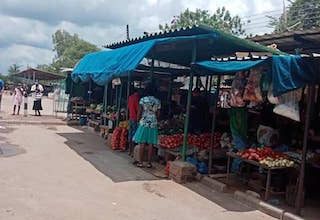Winter crops: A vital weapon against hunger

Winter crops play a crucial role in bolstering food production, and farmers are being urged to cultivate them, even in small gardens.
These crops, including wheat, barley, and oats amongst others are specifically grown during the winter season, typically planted in autumn or early winter and harvested in late winter or early spring.
Well suited to cold temperatures and able to tolerate frost, they enable farmers to sustain agriculture production throughout the winter months.
During EL Nino events, when adverse weather conditions limit pasture growth, winter crops become an essential source of forage and feed for livestock.
They offer additional grazing options when natural pastures are dormant or sparse, and can be harvested as hay or silage to supplement livestock diets during periods of forage scarcity caused by EL Nino-induced droughts or reduced pasture growth.
Richard Chinhamo of Biano Farm emphasised the importance of utilising winter for cultivating crops.
He stressed the versatility of winter crops, highlighting their significance for bread production and encouraging individuals to cultivate small winter pastures in their gardens to contribute to food security.
“Wheat is for bread production, we need bread every other year, so looking at it objectively I think it’s very ideal for everybody to be looking at doing whatever, even in our small gardens, people can do small little winter pastures and anything else that can help going forward,” he said.
In his Independence Day speech yesterday, President Emmerson Mnangagwa affirmed the government’s commitment to a robust winter cropping program at expanding strategic grain reserves.
“Furthermore, measures are in place to reactivate winter maize projects in Chiredzi, Muzarabani and Binga,” he said.
According to Minister of Information, Publicity and Broadcasting Service Dr Jenfan Muswere the government is targeting planting 120 000 hectares of wheat with an estimated yield production of 624 000 metric tonnes.
“The targeted area for planting barley is 7 000 hectares, with an estimated yield of six metric tonnes per hectare and estimated production of 42 000 metric tonnes. The targeted area for maize/sorghum is 3 250 hectares, with an estimated yield of 3.0 metric tonnes per hectare and estimated production of 9 750 metric tonnes,” said Dr Muswere.
He said wheat planting has commenced in some areas, with various contractors envisaging 123 500 hectares out of the targeted 120 000 hectares.
“The wheat farmer clusters have been submitted to the Zimbabwe Electricity Supply Authority and the Zimbabwe National Water Authority for ring-fencing of electricity and water, respectively.”
Muswere said the bulk of winter maize/sorghum will be produced in regions 4 and 5, while potatoes will be planted in winter in warmer areas and during August on the highveld.
“There are nine production and productivity enablers, namely, power, water, seed, fertilizer, fuel, surveillance for migratory pests, farmer settlement of outstanding farmer payments, finance and coordination, monitoring and evaluation. Regarding power, the Ministries of Lands, Agriculture, fisheries, water and Rural Development, and Energy and Power Development have constituted an agriculture energy task force to coordinate strategies to ensure adequate electricity provision.
“In the same vein, the Banks and contractors are being encouraged to treat electricity as an input and prepay part of the estimated bill on behalf of the farmer as they do for seed and fertilizer,” he said.
Dr Muswere said in terms of water supply, ZINWA will implement seasonal billing.
“The 31 percent tariff reduction is yet to be gazetted, but will be backdated in order not to prejudice farmers,” he said.






